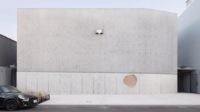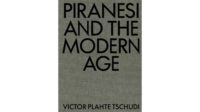The bold promise of Inscriptions: Architecture Before Speech, a sprawling volume edited by K. Michael Hays and Andrew Holder, is written across its spine in inch-tall lettering: “A theory of contemporary architecture in 112 practices, 750 images, and 10 essays.” Several of the essays—particularly those by Sylvia Lavin and Lucia Allais—are thoughtful and provocative. The vast majority of the 624-page book, though, is given over to the images, most without description and many presented in grids and tables that mix drawings, diagrams, and photography.
The book rejects the trite view of contemporary architecture as a “centerless field where anything goes,” Holder writes, and instead searches for commonalities of purpose, method, and thought that unify a highly disparate field. This seems like a worthy undertaking, but only a narrow slice of contemporary architecture is represented. Almost all we find are small or unbuilt projects by young, theory-oriented American architects with academic affiliations, including First Office (led by Andrew Atwood and Anna Neimark), JaJa Co (led by Michelle Chang), and, perhaps unsurprisingly, The LADG—Holder’s own firm. In fact, more than half of the practices featured are led by alumni or current or former faculty of the Harvard Graduate School of Design, where both Hays and Holder teach.
To bill a volume edited by Harvard professors, featuring Harvard architects, and published by Harvard as a “theory of contemporary architecture” should raise some eyebrows. Of even more concern is the editors’ lack of engagement with the cultural, economic, political, and ecological conditions under which architecture is produced. (Hays rebukes a group of historians focused on these conditions for reducing architecture “to the economies of technics and control, leaving nothing of its mysteries or aspirations.”) For Hays and Holder, though not for all the authors, architecture remains its old autonomous self—a formal practice more or less divorced from the realities outside Harvard’s gates.
To wit, the majority of the projects are presented without basic information about program, location, or client—a disservice to their architects, many of whom exercised considerable talent in designing them. For example, readers never learn that First Office’s 2016 proposal for a dolmen-inspired pavilion at MoMA’s PS1, which is referred to throughout the volume, was never built. Hays and Holder prefer to stay at the level of formal comparison, identifying visual similarities and sorting the projects into 14 categories including “trabeated stacks,” “the creaturely,” and something they insist on referring to as “eidetic houses,” which means little more than houses with pitched roofs and other recognizable domestic elements.
In separate essays bookending the volume, Holder and Hays make the theoretical case that the projects are unified by “inscription,” or an act of mark-making undertaken against “originals,” starting points of reference. (These might be elements of nature, like rocks, ancient forms like ziggurats, or building types like gabled houses.) Despite the word’s usual connotations, inscription is understood by Hays and Holder not as linguistic communication—hence the subtitle, “architecture before speech”—but rather the transformation of these originals to open up new and ever-shifting ways for architecture to relate to its audience. Holder’s essay includes the intriguing observation that, in many of the projects, a quiet criticality has replaced the iconoclasm and bombast of earlier avant-garde work. This notion is worth further exploration, and could be applied to a much wider range of recent projects.
Hays’s concluding essay, unfortunately, descends into windy jargon and page-long paragraphs. Some may find meaning in his overwrought prose: “The production of Other jouissance, inflected by the objet a, also involves an encounter and a scene, which are characteristic of the Imaginary, now shot through with a jouissance written on the body in proximity to the Thing, in the very place where we find the Erscheinung of the Thing.” Others may find that such writing obscures more than it reveals. And those of us who remain interested in the original question—whether underlying ideas unify contemporary architecture—will have to look elsewhere for answers.









Post a comment to this article
Report Abusive Comment